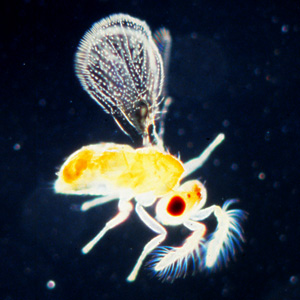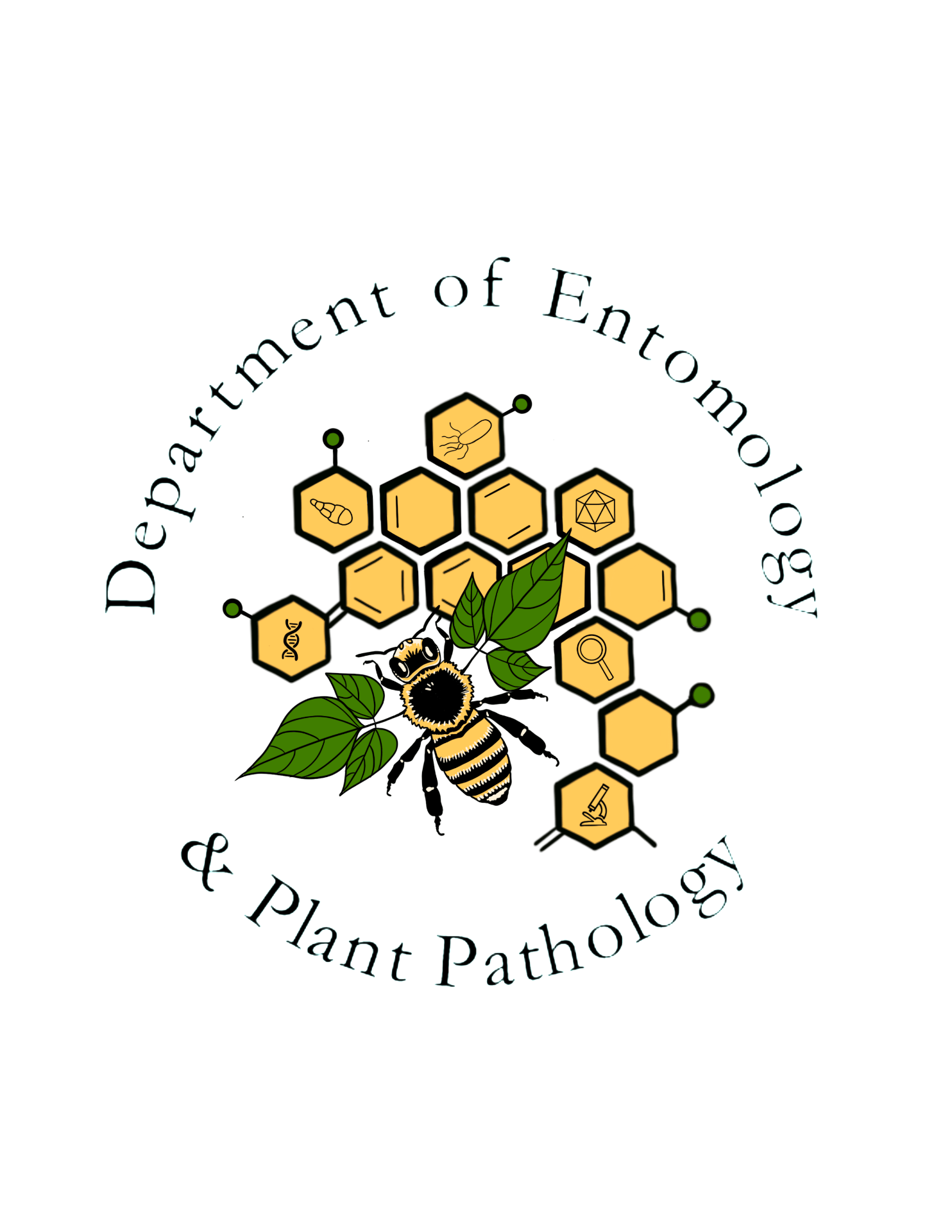Minute egg wasp
Order: Hymenoptera
Family: Trichogrammatidae
Genus and species: Trichogramma minutum Riley
Trichogrammatids wasps are tiny parasites of the eggs of other insects. There are some 80 genera in the family, and about 210 species in the genus Trichogramma worldwide and 60 in North America. Adults range in size from 0.2–1.5 millimeters.
Trichogramma species usually parasitize eggs of moths and butterflies, but some species parasitize eggs of beetles, flies (Diptera), true bugs (Heteroptera), other wasps, and lacewings and their relatives. C. V. Riley, as State Entomologist of Missouri, described the first Trichogramma species in North America. In 1871 he published a description of Trichogramma minutum based on the tiny adult wasps that emerge from butterfly eggs that he collected from willow. Adult female wasps locate a target egg by using chemical and visual cures. She determines the quality of the target egg and varies the number of her own eggs that she inserts into the target egg accordingly.
Trichogramma species are among the most extensively studied and used biological control agent for pest insects, especially caterpillars and moths. Trichogramma minutum is a North American species found in natural areas, annual crops, and orchards. In the United States, it is used as a biological control agent primarily in orchards. It was first mass reared in 1926 on eggs of a stored product pest, the Angoumois grain moth. This demonstrated the feasibility of rearing it in large numbers for inundative release in the field. It is now among the most commonly used species of Trichogramma in biological control work. In one Canadian study, two releases of 30 million T. minutum each per acre resulted in 60–80% egg parasitism of spruce budworm.

